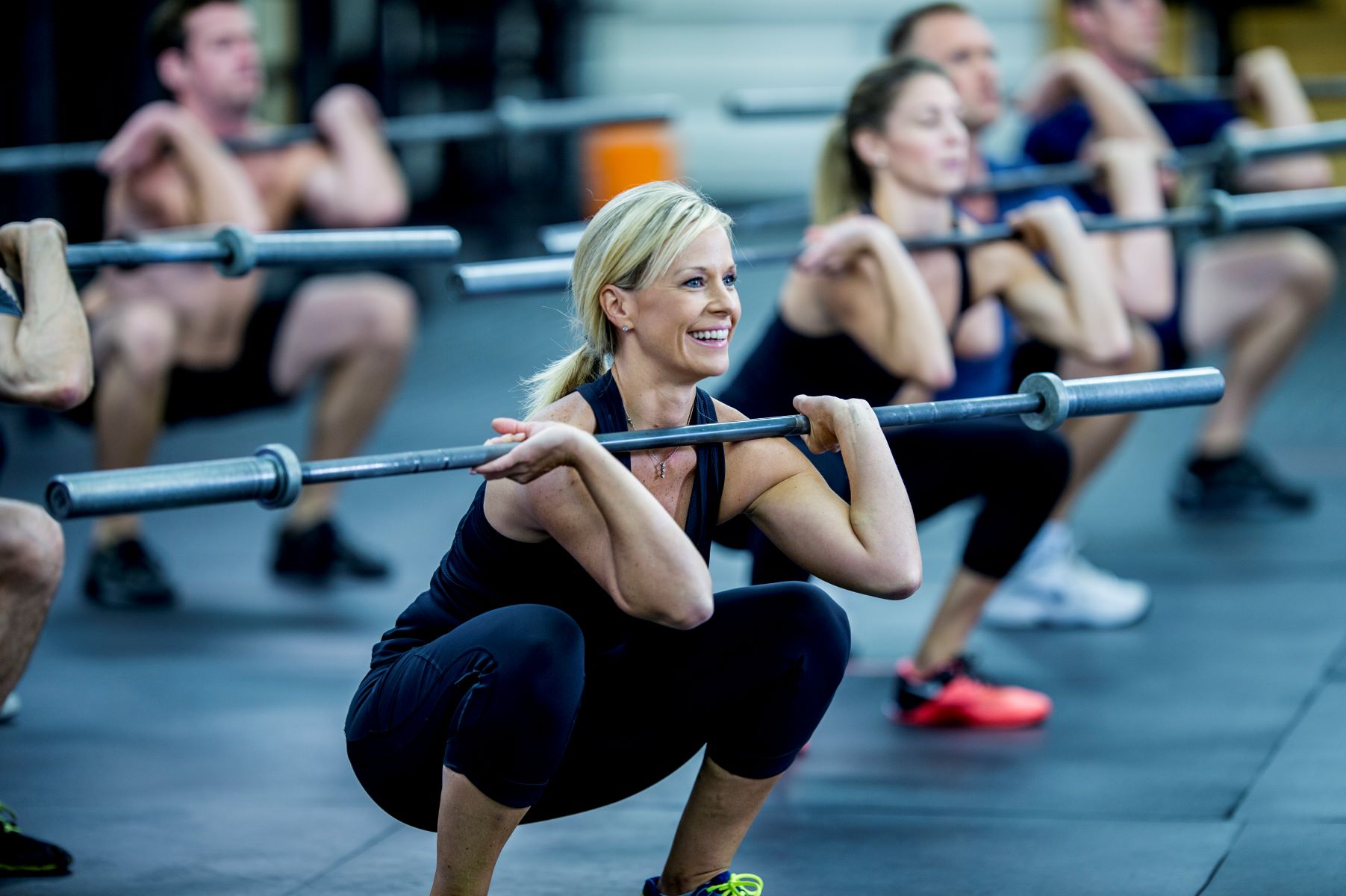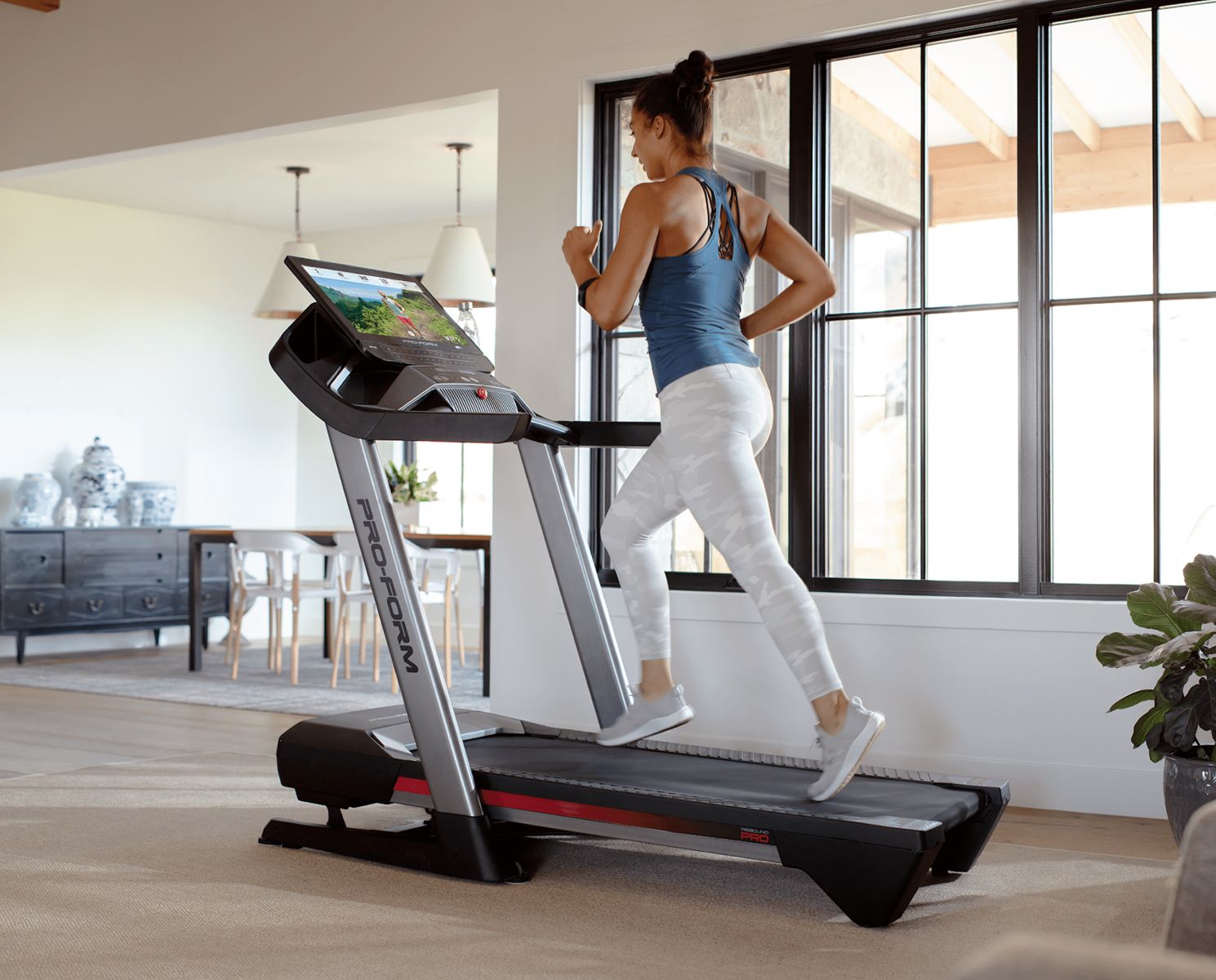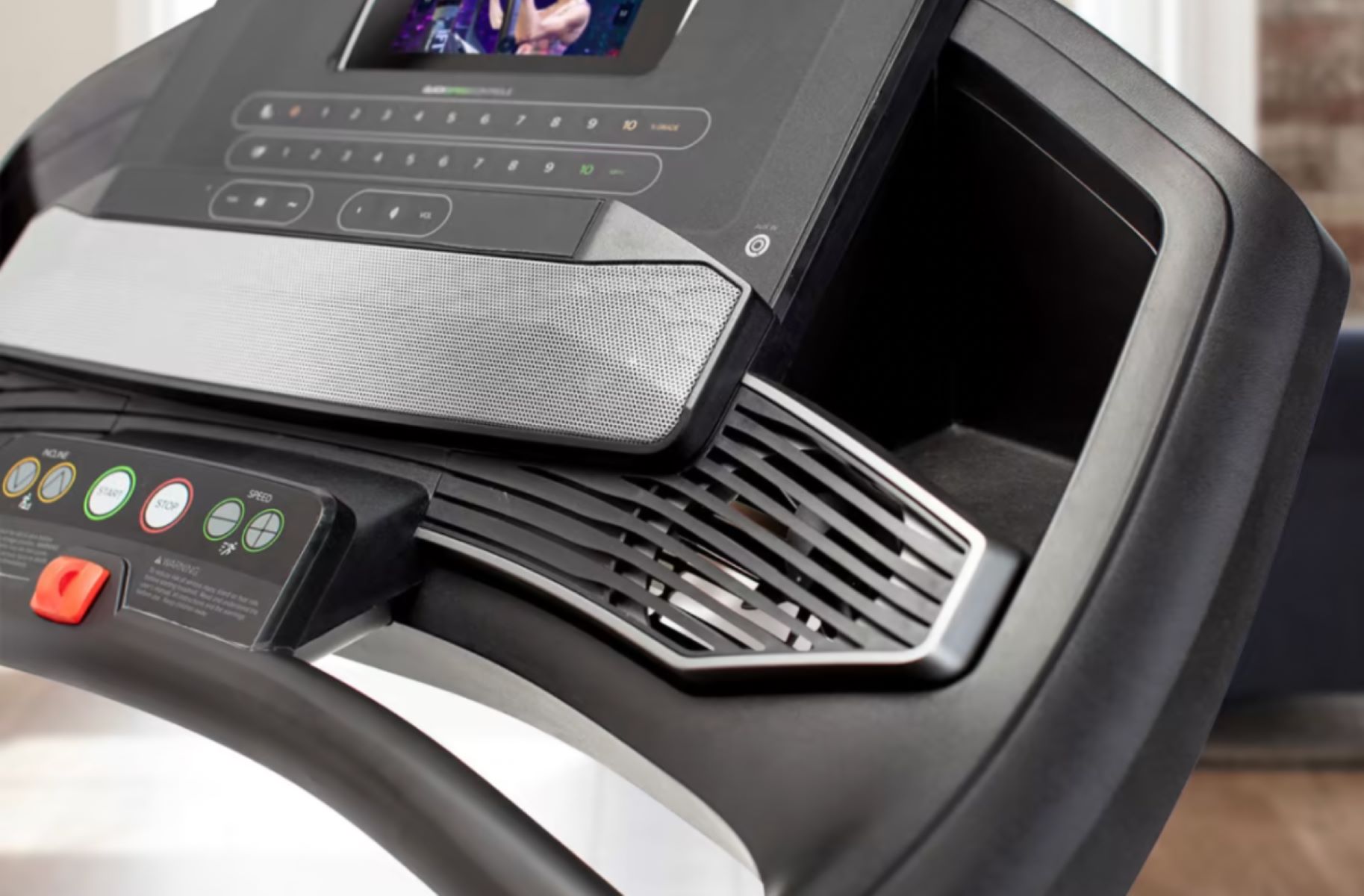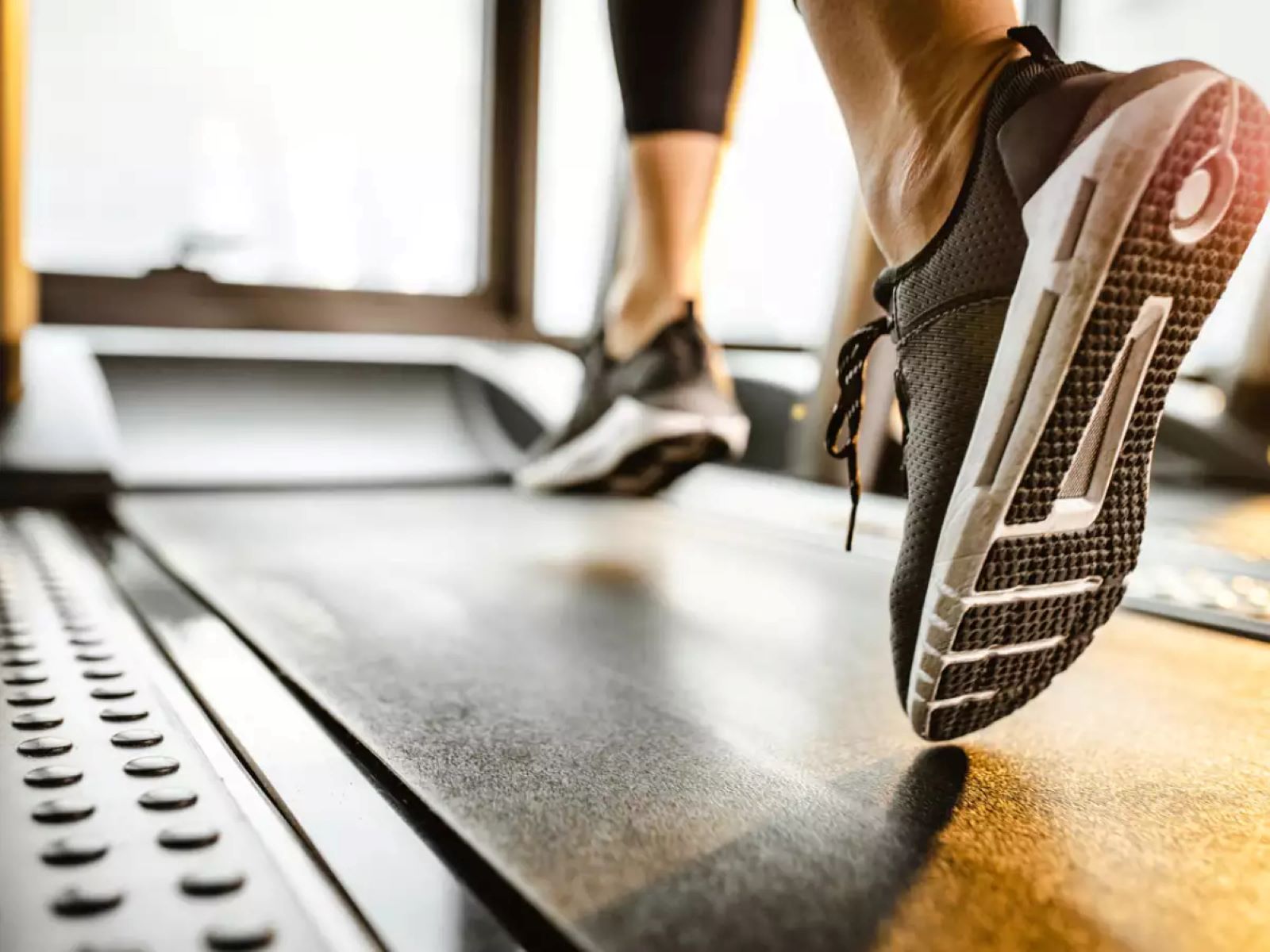Home>Misc>Featured>How Many Calories Should I Burn During A Workout
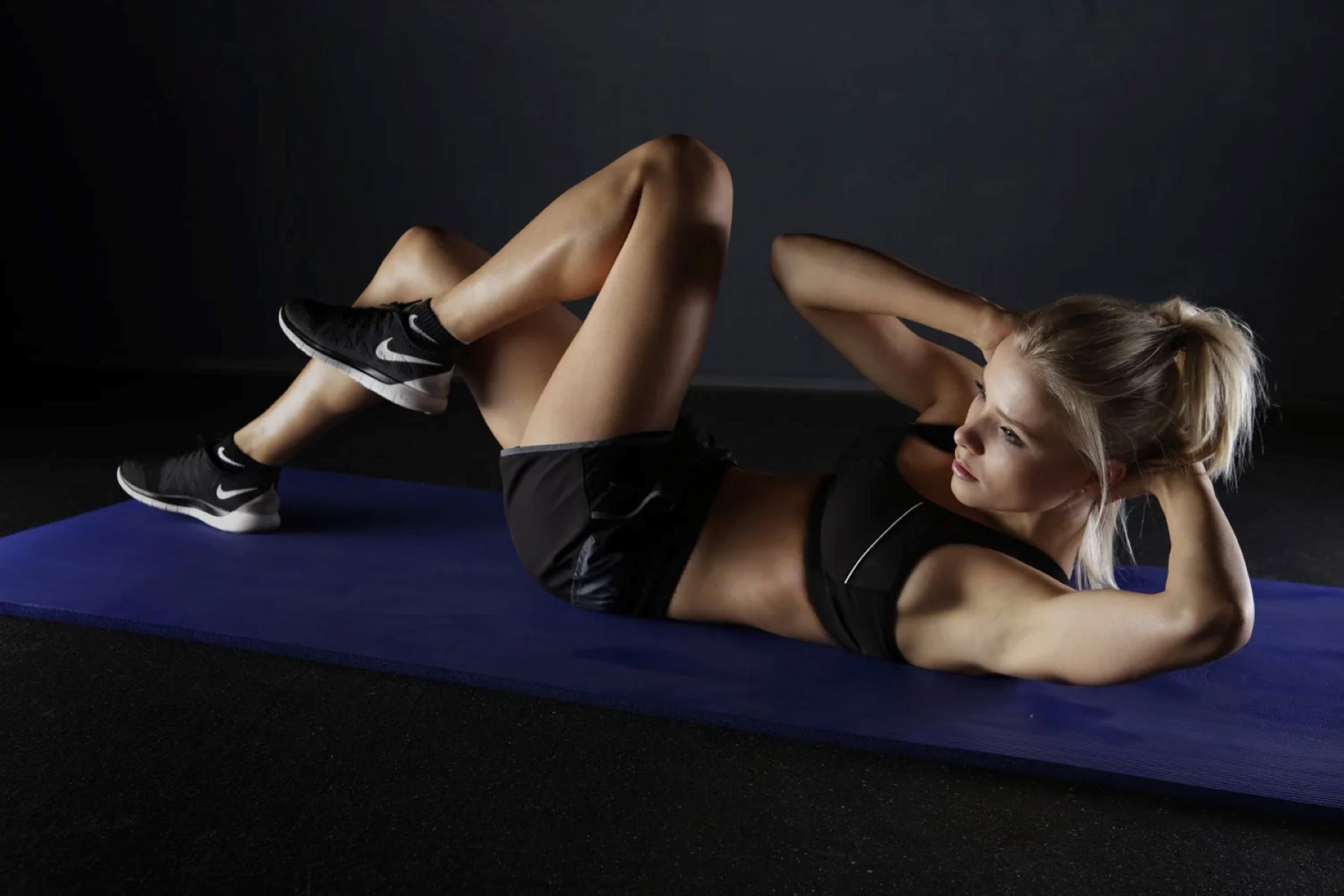

Featured
How Many Calories Should I Burn During A Workout
Modified: January 2, 2024
Learn how many calories you should burn during a workout to achieve your fitness goals. Get expert advice on calorie burning and the importance of featured exercises.
Introduction
When it comes to achieving fitness goals, understanding how many calories you should burn during a workout is crucial. Whether you’re looking to lose weight, improve overall health, or maintain your current weight, knowing the right amount of calories to burn can help guide your exercise routine.
Calorie burn refers to the number of calories your body uses to perform physical activity. This energy expenditure plays a significant role in weight management, as burning more calories than you consume can lead to weight loss.
However, determining the ideal calorie burn for your fitness goals is not a one-size-fits-all approach. It depends on various factors, including your age, gender, weight, fitness level, and the type and intensity of your workouts.
In this article, we will dive into the factors that affect calorie burn, how to set calorie burn goals, and the different types of workouts that can help you burn calories effectively. We will also provide recommendations for calorie burn if your goal is weight loss and offer tips to monitor and increase your calorie burn during a workout.
Whether you’re a beginner or an experienced fitness enthusiast, understanding how many calories you should burn during a workout is essential for optimizing your fitness journey. So, let’s get started!
Understanding Calorie Burn
Calorie burn is the measurement of energy expenditure during physical activity. When you engage in exercise, your body requires energy to perform the movements, and this energy comes from calories. The more intense the activity, the more calories you burn.
Calories are a unit of measurement for energy. They are derived from the food we consume, and they fuel our bodies to perform various functions, including exercise.
Understanding how calorie burn works can help you make informed decisions about your workouts and reach your fitness goals more effectively.
When you engage in physical activity, your body goes through a metabolic process where it breaks down stored glycogen and fat to produce energy. This energy is used to power your muscles and keep your body functioning properly.
The number of calories you burn during a workout is influenced by factors such as:
- Your basal metabolic rate (BMR): This is the number of calories your body needs at rest to maintain basic bodily functions, such as breathing and digestion.
- Your activity level: The more physical activity you engage in, the more calories you burn.
- Your weight: Heavier individuals tend to burn more calories during the same activity compared to lighter individuals.
- The type and intensity of your workout: Different activities and exercise intensities result in varying calorie expenditure.
It’s important to note that calorie burn is not solely dependent on the duration of your workout. The intensity of the activity plays a significant role in determining the number of calories burned. High-intensity exercises, such as HIIT (High-Intensity Interval Training) or weightlifting, can result in a higher calorie burn compared to low-intensity activities like walking or gentle yoga.
Additionally, different people may have different metabolic rates and energy efficiency, so the calorie burn can vary from person to person even if they engage in the same exercise.
Understanding how calorie burn works can help you plan your workouts more effectively. By selecting activities that align with your fitness goals and considering the intensity, duration, and frequency of your workouts, you can optimize your calorie burn and make progress towards your desired outcomes.
Factors Affecting Calorie Burn
Several factors influence the number of calories you burn during a workout. Understanding these factors can help you tailor your exercise routine to optimize your calorie burn and reach your fitness goals more effectively.
Here are some key factors that affect calorie burn:
- Weight: Your body weight has a significant impact on the number of calories you burn during a workout. Generally, the more you weigh, the more calories you’ll burn because it requires more energy to move a heavier body.
- Body composition: Your body composition, specifically the amount of muscle mass you have, affects calorie burn. Muscles are more metabolically active than fat, meaning they burn more calories at rest. Therefore, individuals with a higher percentage of lean muscle mass tend to burn more calories during both exercise and rest.
- Age: As you age, your metabolism naturally slows down, which can slightly decrease the number of calories you burn during a workout. However, regular physical activity can help mitigate this effect and maintain a healthy metabolism.
- Gender: Men typically have higher basal metabolic rates and larger muscle mass than women, resulting in a higher calorie burn. However, individual variations and exercise intensity play a significant role, so it’s essential to focus on personal fitness goals rather than comparing calorie burn solely based on gender.
- Fitness level: The more fit you are, the more efficient your body becomes at using energy. This means that as you become more physically active and improve your fitness level, you may start burning fewer calories during the same workout. To continually challenge your body and maintain calorie burn, consider increasing the intensity or duration of your workouts.
- Exercise intensity: The intensity of your workout plays a crucial role in calorie burn. High-intensity activities, such as running or HIIT workouts, typically result in a higher calorie burn compared to low-intensity exercises like walking or gentle stretching. By incorporating a mix of both high and low-intensity activities into your routine, you can optimize calorie burn.
- Duration and frequency of exercise: The duration and frequency of your workouts also impact calorie burn. Longer workouts generally result in more calories burned. However, it’s important to listen to your body and avoid overexertion. Consistency is key, so aim for regular exercise sessions rather than sporadic intense workouts.
Understanding these factors can help you make informed decisions about your workout routine. By considering your individual circumstances, such as weight, fitness level, and goals, you can adjust your exercise plan to optimize calorie burn and make progress towards your desired outcomes.
Setting Calorie Burn Goals
Setting calorie burn goals is an essential aspect of any fitness journey. By defining specific targets, you can stay motivated, track your progress, and make adjustments to your workout routine as needed. Here are some steps to help you set realistic and effective calorie burn goals:
- Assess your current fitness level: Begin by evaluating your current fitness level. Consider factors such as your weight, body composition, and physical capabilities. This self-assessment will serve as a benchmark for setting realistic goals.
- Determine your desired outcomes: Identify your fitness goals. Do you want to lose weight, maintain your current weight, or enhance your overall fitness? Being clear about your objectives will help you set more specific calorie burn targets.
- Consult with a fitness professional: If you’re unsure about setting calorie burn goals, consider consulting with a fitness professional. They can analyze your unique circumstances and provide expert guidance tailored to your needs.
- Calculate your daily calorie needs: Use a reliable online calculator or consult with a registered dietitian to determine your daily calorie needs. This calculation takes into account your age, gender, weight, activity level, and desired goals. It will provide an estimate of the calories you need to consume to maintain your current weight.
- Set a calorie deficit or surplus: If your goal is weight loss, create a modest calorie deficit by reducing your daily calorie intake and increasing your calorie burn through exercise. On the other hand, if your goal is to gain weight or build muscle, aim for a calorie surplus by consuming more calories than you burn.
- Create an exercise plan: Based on your desired calorie burn goals, develop an exercise plan that includes a combination of cardiovascular workouts, strength training, and flexibility exercises. Allocate time for different types of workouts to target various muscle groups and maximize calorie burn.
- Track and monitor your progress: Utilize fitness trackers, mobile apps, or a simple journal to track your workouts and calorie burn. Regularly monitor your progress to ensure you’re on track to meet your goals. Adjust your workout routine and calorie intake as necessary.
- Stay motivated and be flexible: Remember that setting calorie burn goals is a long-term commitment. Stay motivated by celebrating milestones, seeking support from others, and exploring new types of workouts. Be flexible and willing to adapt your goals based on lifestyle changes and personal preferences.
Setting calorie burn goals requires a combination of self-awareness, knowledge, and persistence. By following these steps, you can establish attainable objectives and stay motivated on your fitness journey.
Different Types of Workouts and Calorie Burn
Engaging in different types of workouts is not only beneficial for overall fitness but also plays a role in calorie burn. Each workout style has its unique characteristics, intensity levels, and impact on calorie expenditure. By incorporating a variety of exercises into your routine, you can optimize your calorie burn and enjoy the benefits of a well-rounded fitness program. Here are some popular workout types and their estimated calorie burn per hour:
- Aerobics: Aerobic workouts, such as dance-based classes or step aerobics, can help you burn approximately 300-500 calories per hour, depending on the intensity and duration of the session.
- Running: Running is a high-intensity cardiovascular exercise that can burn around 600-800 calories per hour, depending on factors like speed, terrain, and body weight.
- Cycling: Cycling, whether on a stationary bike or outdoors, can burn about 400-600 calories per hour, depending on the speed and resistance level.
- Swimming: Swimming engages various muscle groups and can lead to a calorie burn of around 400-600 calories per hour. The intensity and stroke style can influence the final calorie expenditure.
- Strength Training: While strength training may not burn as many calories as cardio activities during the workout itself, it has a long-lasting impact. Building lean muscle mass increases your basal metabolic rate, leading to more calories burned at rest. On average, strength training can burn approximately 200-400 calories per hour, depending on factors like exercise selection and intensity.
- HIIT: High-Intensity Interval Training (HIIT) involves short bursts of intense exercise followed by brief recovery periods. HIIT workouts are known for their calorie-burning efficiency and can help you burn around 400-600 calories per hour, thanks to the intense nature of the exercises.
- Yoga: While yoga is more focused on flexibility, balance, and mindfulness, it still contributes to calorie burn. Depending on the style and intensity, you can expect to burn approximately 200-400 calories per hour during a yoga session.
- Dancing: Dancing is not only a fun activity but also an effective calorie burner. Depending on the dance style and intensity, you can burn between 300-500 calories per hour while grooving to your favorite tunes.
It’s important to note that these calorie burn estimates are approximate and can vary depending on factors such as individual weight, intensity, and duration of exercise. The key is to find activities that you enjoy and can sustain over time.
Incorporating a combination of cardiovascular workouts, strength training, and flexibility exercises into your routine ensures that you target different muscle groups, improve overall fitness, and maximize calorie burn. Consult with a fitness professional to create a balanced workout plan suitable for your goals and preferences.
Recommended Calorie Burn for Weight Loss
When it comes to weight loss, creating a calorie deficit is crucial. This means you need to burn more calories than you consume. However, it’s important to strike a balance between creating a calorie deficit and maintaining a healthy, sustainable approach to weight loss.
While there is no one-size-fits-all recommendation for calorie burn during weight loss, a general guideline is to aim for a deficit of 500-1000 calories per day. This would result in a weight loss of about 1-2 pounds (0.45-0.9 kg) per week, which is considered healthy and sustainable.
To achieve this calorie deficit, a combination of diet modification and physical activity is essential. Remember, it’s not just about focusing on burning calories during your workout, but also paying attention to the overall energy balance throughout the day.
Aim for a combination of cardiovascular exercise, strength training, and flexibility workouts to optimize calorie burn and overall fitness. Here are some tips to help you reach your recommended calorie burn for weight loss:
- Monitor your calorie intake: Keep track of your daily calorie consumption to ensure you’re creating a deficit. Use a food diary or a mobile app to help you stay accountable and make informed food choices.
- Incorporate high-intensity workouts: High-intensity exercises, such as interval training or circuit training, can help you burn more calories in less time. These workouts elevate your heart rate and keep your metabolism elevated even after you’ve finished exercising.
- Add strength training to your routine: Including strength training exercises helps build lean muscle mass, which boosts your metabolism and increases calorie burn even at rest. Aim for at least two to three strength training sessions per week.
- Stay consistent with physical activity: Regular exercise is key to achieving weight loss goals. Aim for at least 150 minutes of moderate-intensity aerobic activity or 75 minutes of vigorous-intensity aerobic activity per week, along with two or more days of strength training.
- Consider working with a fitness professional: If you’re unsure about the right approach to calorie burn for weight loss, consider consulting with a registered dietitian or a certified personal trainer. They can provide personalized guidance and tailor a plan to your specific needs.
Remember, sustainable weight loss is a gradual process that requires patience and consistency. It’s important to focus on overall health and well-being rather than solely on the number of calories burned. Prioritize nourishing your body with nutritious foods and engaging in enjoyable physical activities to create a balanced approach to weight loss.
Monitoring Calorie Burn During a Workout
Monitoring your calorie burn during a workout can provide valuable insights into your exercise intensity, progress, and help you stay on track with your fitness goals. While it’s challenging to obtain exact calorie burn measurements, several methods can help estimate and track your calorie expenditure. Here are some ways to monitor calorie burn during a workout:
- Heart Rate Monitoring: Using a heart rate monitor or fitness tracker that measures heart rate can provide a good estimate of calorie burn. These devices calculate calorie expenditure based on your heart rate during exercise. Make sure to input accurate personal information, such as age, weight, and gender, into the device for more accurate results.
- Fitness Apps: Many fitness apps offer features that track your workouts and estimate calorie burn. These apps use algorithms based on exercise intensity, duration, and personal information to estimate your calorie expenditure. Some apps may also sync with heart rate monitors or other wearable devices for more accurate readings.
- Online Calorie Calculators: Online calorie burn calculators can be helpful in estimating calorie expenditure based on the type of exercise, duration, and your body weight. While these calculators may not be as accurate as heart rate monitoring or fitness trackers, they can still provide a rough estimate.
- Metabolic Calculations: Advanced metabolic testing, such as indirect calorimetry, can provide highly accurate measurements of your calorie burn during exercise. This involves analyzing the oxygen and carbon dioxide you breathe in and out to determine energy expenditure. However, this method is typically performed in a clinical or research setting and is not accessible to everyone.
- Perceived Exertion: Another method to monitor calorie burn is to gauge your perceived exertion level during exercise. This is a subjective measure of how hard you feel you’re working. You can use scales like the Borg Rating of Perceived Exertion (RPE) to rate your effort on a scale from 1 to 10. While perceived exertion doesn’t provide an exact calorie count, it can give you a general sense of your workout intensity.
It’s important to remember that these monitoring methods provide estimates, and there can be variations in individual metabolic rates and energy efficiency. Nevertheless, tracking calorie burn can be a useful metric for monitoring progress, adjusting your workout intensity, and staying motivated.
Experiment with different monitoring methods to find what works best for you. Combine different tracking techniques, such as heart rate monitoring with perceived exertion, to get a more comprehensive understanding of your calorie burn during workouts. Regularly tracking your calorie burn can also provide valuable data to make informed decisions about adjusting your exercise routine to align with your fitness goals.
Tips for Burning More Calories
If you’re looking to increase your calorie burn during workouts and maximize your overall energy expenditure, here are some effective tips to help you achieve that:
- Increase Exercise Intensity: One of the most efficient ways to burn more calories is by increasing the intensity of your workouts. Incorporate intervals of higher intensity, such as sprints during running or adding resistance during strength training, to challenge your body and elevate your calorie burn.
- Incorporate Strength Training: Adding strength training to your routine helps build lean muscle mass, which increases your metabolism and calorie burn even at rest. Incorporate compound exercises that engage multiple muscle groups, as they tend to burn more calories.
- Try High-Intensity Interval Training (HIIT): HIIT workouts involve short bursts of intense exercise followed by periods of active recovery. This type of training has been shown to increase calorie burn and improve cardiovascular fitness in a shorter amount of time compared to steady-state cardio workouts.
- Include Cardiovascular Exercises: Regular cardiovascular exercises, such as running, cycling, or swimming, are great for burning calories and improving cardiovascular health. Aim to include at least 150 minutes of moderate-intensity aerobic activity or 75 minutes of vigorous-intensity aerobic activity per week.
- Engage in Non-Exercise Physical Activity: Maximizing your calorie burn doesn’t just happen during structured workouts; it can also occur through non-exercise physical activity. Incorporate more active movement into your day by taking the stairs instead of the elevator, walking or biking to work, or doing household chores more vigorously.
- Mix Up Your Workouts: Keep your workouts varied and engaging to challenge your body and prevent adaptation. Trying new activities or alternating between different types of exercises can help increase calorie burn by working different muscle groups and keeping your body guessing.
- Stay Consistent: Consistency is key when it comes to burning calories and seeing results. Aim for regular exercise sessions throughout the week rather than sporadic intense workouts. Find a routine that fits your schedule and lifestyle, making it easier to stay consistent.
- Stay Hydrated: Drinking enough water is crucial for optimal performance during workouts. Dehydration can hinder your fitness efforts and impact your calorie burn. Stay hydrated before, during, and after your workouts to ensure proper performance and recovery.
- Get Enough Rest and Recovery: Inadequate rest and recovery can interfere with calorie burn and overall progress. Allow your body time to rest and repair through adequate sleep, rest days, and proper nutrition. This will help optimize your energy levels and support healthy metabolism.
- Seek Professional Guidance: If you’re unsure about the most effective ways to increase your calorie burn, consider working with a certified personal trainer or fitness professional. They can provide personalized guidance, develop a tailored workout plan, and help you reach your calorie burn and fitness goals.
Remember, it’s important to listen to your body and work within your capabilities. Gradually increase the intensity and duration of your workouts to avoid overexertion or injury. Consistency, a balanced approach, and a mix of different tips and strategies will help you maximize your calorie burn and progress towards your fitness goals.
Conclusion
Understanding how many calories you should burn during a workout is vital for reaching your fitness goals. By considering factors such as your weight, gender, fitness level, and exercise intensity, you can optimize your calorie burn and make progress towards weight loss, improved health, or maintenance of your current weight.
Remember, setting realistic and attainable calorie burn goals is essential for long-term success. Strive for a modest calorie deficit or surplus to promote healthy weight loss or weight gain. Incorporate a variety of workouts, including cardiovascular exercise, strength training, and flexibility exercises, to target different muscle groups, enhance overall fitness, and maximize calorie burn.
Monitoring your calorie burn during a workout can provide valuable insights into your exercise intensity and progress. Utilize heart rate monitors, fitness apps, or perceived exertion to estimate and track your calorie expenditure. Regularly evaluating and adjusting your workout routine based on these measurements can help you stay on track and motivated towards your goals.
Additionally, implementing tips such as increasing exercise intensity, incorporating strength training, and trying high-intensity interval training (HIIT) can help you burn more calories and achieve optimal fitness results. Remember to stay hydrated, get enough rest and recovery, and seek professional guidance whenever needed.
Ultimately, the journey towards achieving your desired calorie burn and fitness goals requires consistency, patience, and a balanced approach. Embrace the process, listen to your body, and make sustainable lifestyle changes that promote long-term health and well-being.




